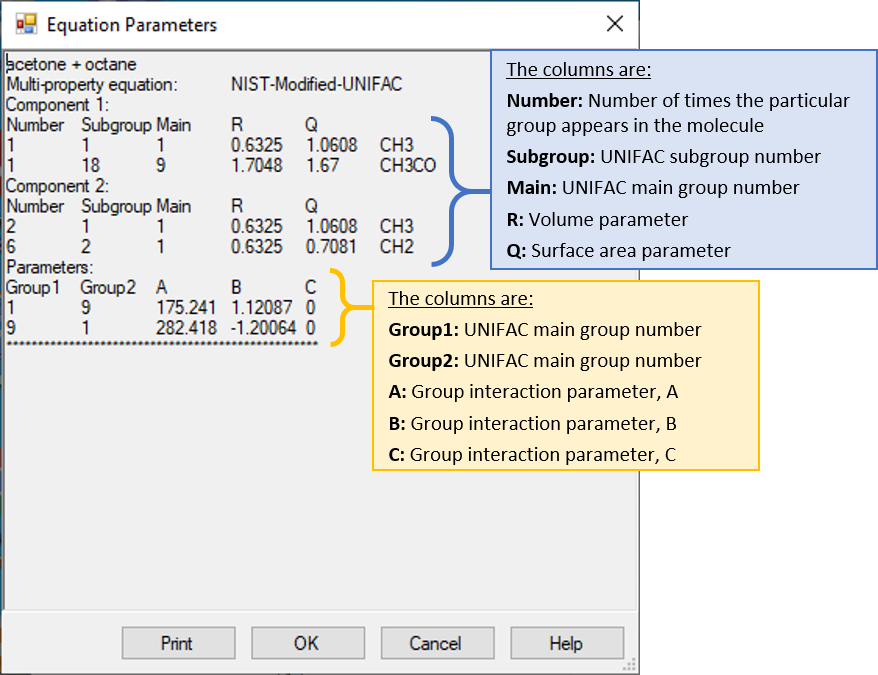Activity Coefficient Model: NIST-Modified UNIFAC Prediction Method
The method is one of the family of UNIFAC group-contribution prediction methods. The mathematical formulation of this method was described by Jakob et al. (Reference 34). Details of parameter derivations for this formulation are described in reference 33 (Kang et al., 2013).
NIST-Modified UNIFAC is distinguished by:
- Well-defined main groups and subgroups
- 3-term temperature dependence of the interaction parameters
- A special form of the combinatorial contribution consistent with the original literature formulation (Jakob et al., reference 34)
- All geometrical and energetic parameters were derived from the experimental data stored in the TRC SOURCE Data Archival System
Parameters used in TDE to calculate the predicted values are output as "Equation Parameters":

Details of the model implementation in TDE, including the ThermoML-Equation representation are available. (See the ThermoML web site for details of this IUPAC communication standard.)